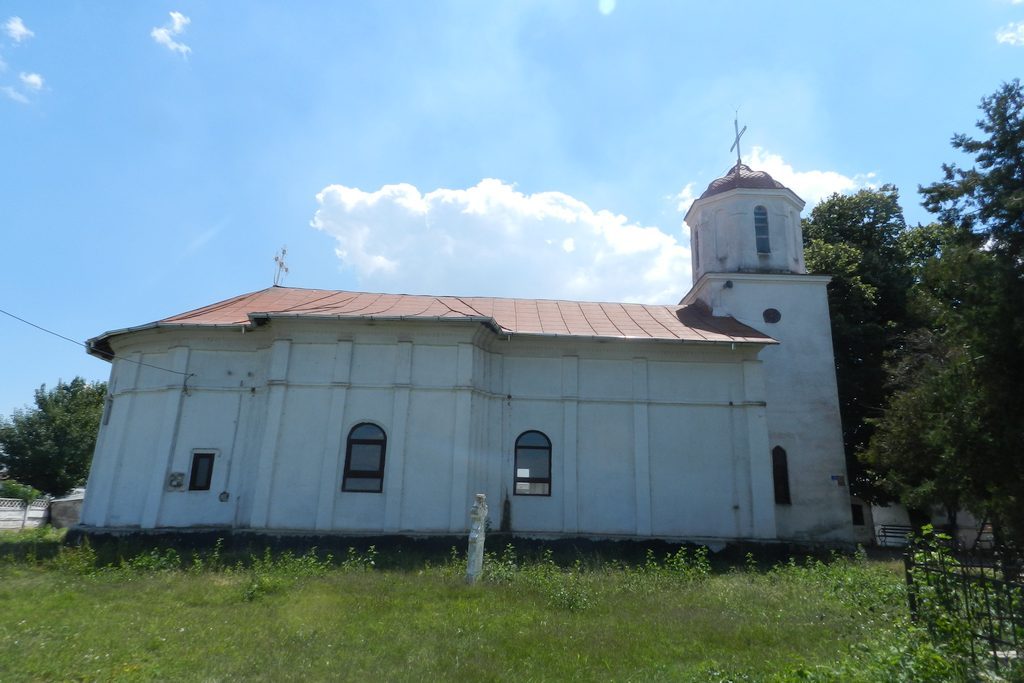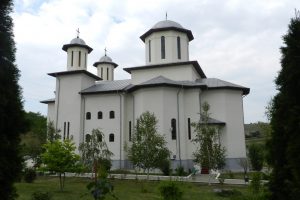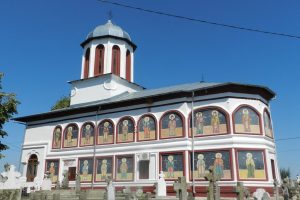

The parish church “Saint Nicholas” made of wood, was built before 1845.
According to writings on the inscription, the church was built from the foundation in 1863. It was repaired and painted again in 1940. “In 1993-1994 were carried out the following works: painting restoration, mending the exterior and painting the niches. The amount needed for this work was obtained by the parishioners contribution by advise of Pr. Vicar Pîrvănescu M. Dumitru and of councilors […] “is recorded in the inscription of the place of worship. Tia Mare is a commune in Olt County, Oltenia, Romania, composed of villages Doanca, Potlogeni and Tia Mare (residence). Tia Mare, from historical point of view was a Roman dava bearing the name Antonina, then, Antonia. Later, it was the estate of Michael the Brave, bearing the name Tiha, Tia Mare then became the property of Preda Brancoveanu. The beginnings of human settlements in Tia Mare are lost in history, but even if we do not have proof, we can sustain, without risk of error, that human life existed since the Neolithic Age. Clear evidences from the region Tia Mare are missing because being considered with no archaeological importance the area has not been researched and eventual traces of ancient life, accidentally discovered, were neither kept nor studied. Yet in 1977, col. PhD. in history Cristian Vlãdescu and archaeologist Neculai Moghior from National Military Museum have conducted summary investigations in order to detect a Roman fortification thought to be existing within the commune Tia Mare,a fortress that is mentioned in the works, either by our historians, and by some foreign historians. On this occasion excavations were made in three points in which the information from inhabitants indicated the presence of many pottery fragments in the arable layer. The first point was in the area fountains under the coastal where were found fragments of Roman pottery in particular the lip of the pot and a fragment of a small pitcher, appreciated by the two specialists that are the ones known for the type of Roman pottery of the second century after Christ. The investigations being very sketchy, the experts could not rule on the existence of a human settlement in this area. Another investigated point is located in the reserve fountain area where within a perimeter of about 2 hectares, came to the surface numerous fragments of pottery, Roman tiles and pieces of limestone. A third digging was conducted on a knoll located in the old floodplain on the left bank of the river Olt current point called Săliştea or at the city, point as it results from the study of the old maps to be located on the right bank of the river Olt. During excavations appeared bricks, broken tiles and fragments of Roman pottery from the second century after Christ, and in the middle of a section appeared a hole, of 1.50 m wide and 2.00 m deep with many metal magnifiers and other remainings resulted probably from a blacksmith shop.


